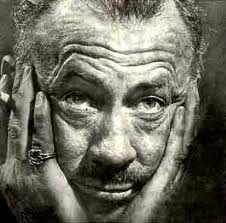Author: normahorton
(The sixth post in a series that summarizes an entire semester of Journalism 101.)
Authors are told to “show, don’t tell.” That’s good advice that distinguishes professional from amateur. One of the best ways to “show” is via a crafted depiction of time.
I like pretty prose, although I don’t like getting bogged down in it. By evoking the element of time, I can share something lovely, stay within the “show-but-don’t-tell” rubric, and create a fulfilling experience that keeps readers in my story. Here are two examples—one external to characters, the other internal—of how to use time to “show.”
 Seasons. Note seasonal changes in your settings. I’m a big fan of only writing about places I’ve visited extensively, studied, and preferably, lived. I realize that’s impossible if your story is on a space station or in a future world. But if you’re writing contemporary or historical fiction, in my opinion, there’s no replacement for the experinece of being on location. I can tell you how London smells in the autumn. How the air feels (and actually, looks) at the edge of the Dead Sea. I remember how light changes at the mouth of the Grand Bazaar in Istanbul as day ends. And I know signs of changing seasons on the Amazon in Peru, Petrohue in Chile, and Snake in America. These small parts, from deisel-laden air to violet light to dismanteling a stilt hut to prepare for the rising of arguably the world’s longest river, convey the passage of time—beautifully.
Seasons. Note seasonal changes in your settings. I’m a big fan of only writing about places I’ve visited extensively, studied, and preferably, lived. I realize that’s impossible if your story is on a space station or in a future world. But if you’re writing contemporary or historical fiction, in my opinion, there’s no replacement for the experinece of being on location. I can tell you how London smells in the autumn. How the air feels (and actually, looks) at the edge of the Dead Sea. I remember how light changes at the mouth of the Grand Bazaar in Istanbul as day ends. And I know signs of changing seasons on the Amazon in Peru, Petrohue in Chile, and Snake in America. These small parts, from deisel-laden air to violet light to dismanteling a stilt hut to prepare for the rising of arguably the world’s longest river, convey the passage of time—beautifully.
Characters. My herione, a middle-aged woman, ends the story looking slightly different from when the story began. More wrinkles, grayer, slower—although still fiesty! Her evolution signifies the toll adventure takes on her body, and I convey time by noting small changes. The same tactic can be used with maturing children, death, or a coming-of-age ritual, such as tatooos. (No. A better ritual is law-school graduation with honors.) But characters wear time’s passage in effective ways. And if your reader has bonded with your characters, he or she will relate personally to the passage of time.
the story began. More wrinkles, grayer, slower—although still fiesty! Her evolution signifies the toll adventure takes on her body, and I convey time by noting small changes. The same tactic can be used with maturing children, death, or a coming-of-age ritual, such as tatooos. (No. A better ritual is law-school graduation with honors.) But characters wear time’s passage in effective ways. And if your reader has bonded with your characters, he or she will relate personally to the passage of time.
How do you handle time within your plot? Do you use tools I’ve missed? I’d love to hear from you.
(The fifth post in a five-week, five-subject series that summarizes an entire semester of Journalism 101.)
Time. The Rolling Stones (“Time Is On My Side”) and Jim Croce (“Time In a Bottle”) sang about it. The Bible (particularly Ecclesiastes) waxes eloquently about it. My mother-in-law is in denial about it. (Just don’t ask).
 Handling time in a manuscript is an important way to create believability and draw a reader into a story. Here are three ways to use the element of time in your work.
Handling time in a manuscript is an important way to create believability and draw a reader into a story. Here are three ways to use the element of time in your work.
Time and Your Characters—The unfurling of a story is a function of time, one marked by your characters’ behavior. As they go about the business of your story, their personalities deepen, and they should respond to time in appropriate ways. For instance, my protagonist is a middle-aged female. She’s up to her neck in adventure with her twenty-something daughter. By the end of a day, Mom is ready for a cup of hot decaffeinated tea in her pajamas, whereas Daughter wants to go out for a double espresso. Because of their ages (time!), they react to the passage of time differently. They anticipate (a time function) differently, too. In dangerous situations, Mom remains cool, with a strong sense of the eternal, and decades of life experience to fall back on. Daughter becomes more impatient and slightly manic.
Time and Your Story’s Progress—I’ll admit it; I’m a freak about chapter endings leading into the next. I often use time to do this. I also am a fan of noting time, date, and location at the beginning of each chapter because I think, in our over-programmed and highly scheduled world, directly telling a reader that it’s noon in Amman is easier than expecting him or her to figure it out. The direct approach keeps readers in the story, and in the mindset to understand the chapter’s action.
Time as a Story Element—I love details. Orange leaves and wood smoke are details of time (autumn). Gray light and starlight indicate time (evening and night). There are so many beautiful, interesting, location-specific ways to convey time in your prose that it’s seldom necessary (in my opinion) to cite time within your manuscript. My writing is pretty lean, so I indulge myself in lovely details regarding time, shading my chapters with it. Come to think of it, I shade my characters as well—with wrinkles and gray hair, or smooth skin and tiny hands.
I’m interested in how you indicate time within your work. Care to share?[subscribe2]
(We interrupt the Who What When Where and Why series for this post about superheroes.)
I seldom read articles unrelated to archaeology, history, theology, women’s issues, or writing. But the headline of a Huffington Post article intrigued me, and I laughed at my desk when I realized how Seven Lessons from Superheroes applied to authors. I quote from the article, and encourage you to read it via this link. http://huff.to/14HN4Se
 1. We all have alter egos. “You can use those different sides of yourself to tap into the “right one” for a given situation—the one that best helps you achieve your goals.” Access your alter egos to get into your characters’ heads, as well to craft believable dialogue and scenes.
1. We all have alter egos. “You can use those different sides of yourself to tap into the “right one” for a given situation—the one that best helps you achieve your goals.” Access your alter egos to get into your characters’ heads, as well to craft believable dialogue and scenes.
2. The costume counts. “Based on how you appear, they make inferences about you (which may or may not be true). And those inferences will affect how they treat you, which will in turn, consciously or unconsciously, affects you.” This item applies so strongly to meetings with literary agents and acquisitions editors. I tell my adult children to dress for the job they want, not the job they have. Dress the part of a professional, successful author!
3. We are all different. “But the specific constellations of physical and psychological characteristics, and experiences, makes each of us unique.” Write from your unique voice. Don’t try to copy someone else, or adapt to a genre because it’s selling.
4. Being different can give you power. “Decide how to use this way of being different to give you more meaning and purpose. Can you use it to help other people?” Again, your unique voice can rock your world, and hopefully, your readers’. Find a way to express and package it, then use it for the common good.
5. Adversity can be overcome. “Adversity induces us to challenge our beliefs about ourselves and the world, and then to develop new meaning, fulfillment, and connections to others as a result.” As my mentor stresses, conflict pulls a reader in. And the triumph that (usually) follows enriches your world (as an author), and theirs.
6. No matter what your abilities, life can still be frustrating. “The ability to persevere in the face of frustration is a superpower.” There’s less than one-half of a one percent chance an unpublished author will receive a traditional publishing contract. Enough said?
7. Running toward danger: overcoming your fears. “When we’re afraid of something, we try to avoid it, but in doing so, our lives may become narrowed. When this happens, we can take a page from a superhero book, take a deep breath, learn some new skills, and face our fears.” Whether a difficult scene, pitching at a conference, or choosing a publisher, writing can be scary. But you have to live to write, and embracing fear as an author will push you to a higher plane, enabling you to share growth and victory to engage your readers.
(The fourth post in a five-week, five-subject series that summarizes an entire semester of Journalism 101.)
Let’s assume you have a killer story. You might be an organic writer who dumps into the computer, returning to pummel the story until it makes sense to the rest of the world. Or you might be a hyper-organized type who outlines, sub-outlines, then creates an oh-so-neat first draft. Regardless of how you get there, I’d like to share six checks-and-balances I use to prepare a manuscript for submission
Ensure each scene has an abundance of senses, then tease them out. Some senses are easy: sight, sound, and smell. Touch and taste are often overlooked. The best writers go further, giving readers a feel for characters. For instance, instead of writing, “she hid behind the camel,” do something like, “she ducked close to the camel, her shoulder brushing its side as she peeked around its haunch.” The first example tells you she’s hiding, the second gives you an idea of her body language, stress, and danger.
sight, sound, and smell. Touch and taste are often overlooked. The best writers go further, giving readers a feel for characters. For instance, instead of writing, “she hid behind the camel,” do something like, “she ducked close to the camel, her shoulder brushing its side as she peeked around its haunch.” The first example tells you she’s hiding, the second gives you an idea of her body language, stress, and danger.
Be weird. Nothing’s more boring than normal. Sure, every manuscript has to have normalcy to be believable, but give readers a sense of character and plot idiosyncrasies. These elements bring reality to your writing table. For instance, I have a character with a red buzz cut, which he dyes. Although that’s different, what makes him memorable is that he’s an old theologian. Now that’s strange.
Find balance between your target market and characters. If you know your market, you know their vocabulary. Don’t write above their heads, or below their I.Q. Match characters’ roles with appropriate vocabulary. A woman with a doctoral degree won’t use “ain’t” any more often than a Bedouin says “balderdash.”
Get ugly. My mentor looks for conflict in my work, telling me it drives a story. She’s right. By the time we’re adults, we know better than “happily ever after.” Write truth. Sometimes it’s ugly.
 Engage emotions. I covered character psyche earlier in the series, but you can share joy and grief with readers only if you know your characters well. Readers want to relate, stay in the story, and care about people who populate it. They can do this only if you share emotions coloring life. And don’t avoid grief. It’s hard to live through, and write about. But the redemption that follows is the readers’ pay off.
Engage emotions. I covered character psyche earlier in the series, but you can share joy and grief with readers only if you know your characters well. Readers want to relate, stay in the story, and care about people who populate it. They can do this only if you share emotions coloring life. And don’t avoid grief. It’s hard to live through, and write about. But the redemption that follows is the readers’ pay off.
Use only material that drives your story. This is the hardest. Learn to identify the difference in a well-written, lovely, exciting scene that is truly irrelevant to moving your story forward, and one that propels the story to keep your reader engaged. This discernment marks a pro, and I urge you to be utterly ruthless in your editing. I still struggle…
Do you have checks and balances for your work? I’d love to hear about them.
(The third post in a five-week, five-subject series that summarizes an entire semester of Journalism 101.)
I just finished the latest release by one of my favorite authors. It’s his thirteenth with the same protagonist, and I think he gets better with each one. It’s obvious he’s so deeply in his protagonist’s skin he probably dreams in character, but his stories remain fresh, and storylines invigorating. How does he do it, I wonder?
 As I worked through this blog post, I came across an excellent compendium of lists about famous authors and their writing tips. It’s better and more comprehensive than anything I would write here, and I believe in ceding to genius when I encounter it. So I’d like to share these links with you, and hope you enjoy discovering how some of our literary forefathers developed their craft.
As I worked through this blog post, I came across an excellent compendium of lists about famous authors and their writing tips. It’s better and more comprehensive than anything I would write here, and I believe in ceding to genius when I encounter it. So I’d like to share these links with you, and hope you enjoy discovering how some of our literary forefathers developed their craft.
Author Henry Miller’s 11 Commandments of Writing: http://bit.ly/ADuqtC
Adman David Ogilvy’s 10 Writing Tips: http://bit.ly/zQpvMN
Author Jack Kerouac’s List of 30 Beliefs and Techniques for Prose and Life: http://bit.ly/GFL2Dk
Author John Steinbeck’s 10 Pointers: http://bit.ly/wYMyfg
Author Kurt Vonnegut’s 8 Tips on How to Write a Short Story: http://bit.ly/hj91vM (YouTube video)
From Vonnegut’s “every sentence must do one of two things — reveal character or advance the action” (my favorite) to Kerouac’s “visionary tics shivering in the chest” (I think he was high), I’d love to hear which nuggets you think will enable you to approach your work in a more educated and professional way. Remember, I’m interested!
 Seasons. Note seasonal changes in your settings. I’m a big fan of only writing about places I’ve visited extensively, studied, and preferably, lived. I realize that’s impossible if your story is on a space station or in a future world. But if you’re writing contemporary or historical fiction, in my opinion, there’s no replacement for the experinece of being on location. I can tell you how London smells in the autumn. How the air feels (and actually, looks) at the edge of the Dead Sea. I remember how light changes at the mouth of the Grand Bazaar in Istanbul as day ends. And I know signs of changing seasons on the Amazon in Peru, Petrohue in Chile, and Snake in America. These small parts, from deisel-laden air to violet light to dismanteling a stilt hut to prepare for the rising of arguably the world’s longest river, convey the passage of time—beautifully.
Seasons. Note seasonal changes in your settings. I’m a big fan of only writing about places I’ve visited extensively, studied, and preferably, lived. I realize that’s impossible if your story is on a space station or in a future world. But if you’re writing contemporary or historical fiction, in my opinion, there’s no replacement for the experinece of being on location. I can tell you how London smells in the autumn. How the air feels (and actually, looks) at the edge of the Dead Sea. I remember how light changes at the mouth of the Grand Bazaar in Istanbul as day ends. And I know signs of changing seasons on the Amazon in Peru, Petrohue in Chile, and Snake in America. These small parts, from deisel-laden air to violet light to dismanteling a stilt hut to prepare for the rising of arguably the world’s longest river, convey the passage of time—beautifully. the story began. More wrinkles, grayer, slower—although still fiesty! Her evolution signifies the toll adventure takes on her body, and I convey time by noting small changes. The same tactic can be used with maturing children, death, or a coming-of-age ritual, such as tatooos. (No. A better ritual is law-school graduation with honors.) But characters wear time’s passage in effective ways. And if your reader has bonded with your characters, he or she will relate personally to the passage of time.
the story began. More wrinkles, grayer, slower—although still fiesty! Her evolution signifies the toll adventure takes on her body, and I convey time by noting small changes. The same tactic can be used with maturing children, death, or a coming-of-age ritual, such as tatooos. (No. A better ritual is law-school graduation with honors.) But characters wear time’s passage in effective ways. And if your reader has bonded with your characters, he or she will relate personally to the passage of time.



